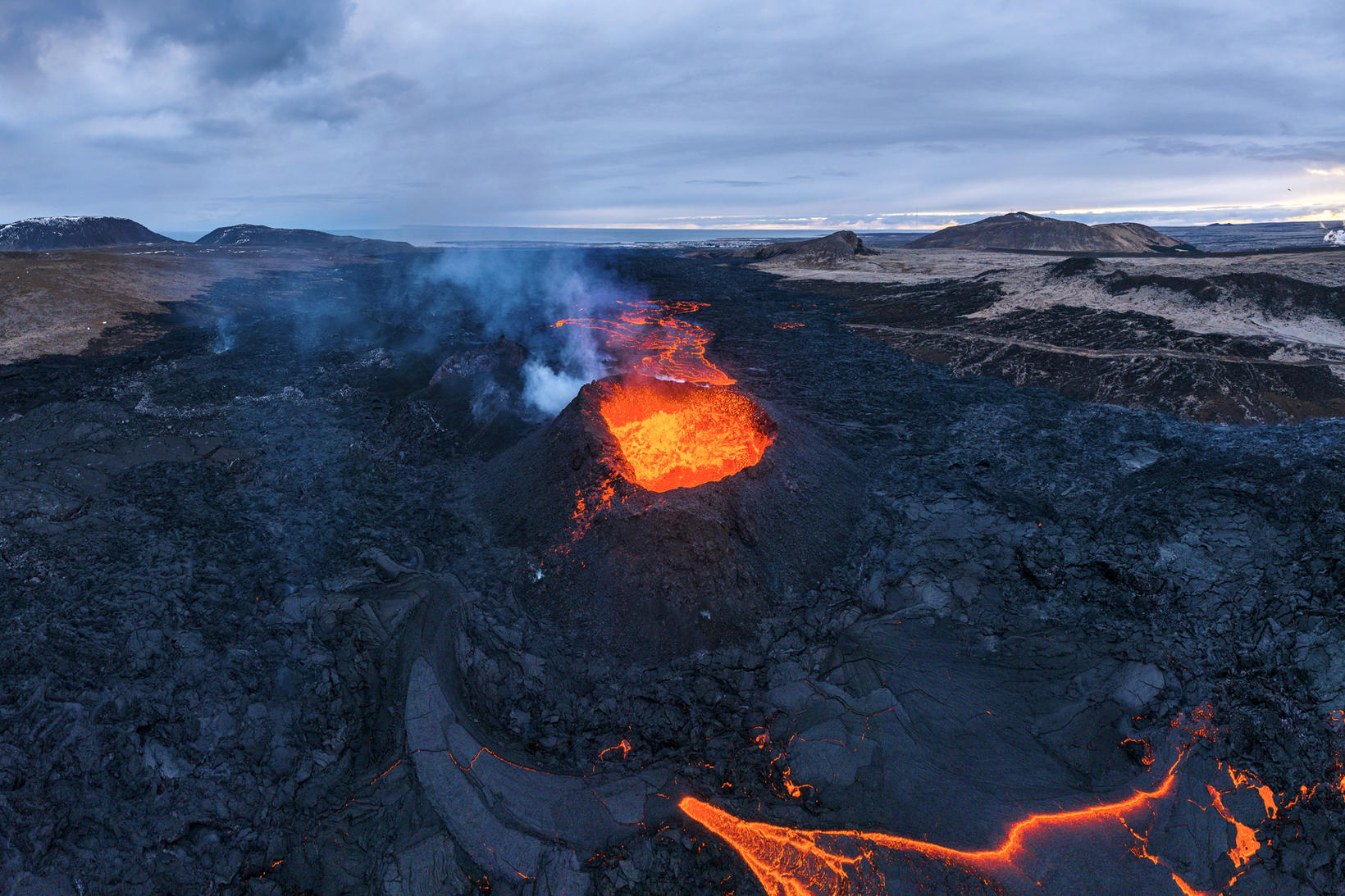Seismic activity in Iceland a concern
Last Tuesday it was exactly a month since the eruption started in Sundhnúkagígar crater row. Photo/Hörður Kristleifsson
Just over one month has passed since the fourth eruption at the Sundhnúkagígar crater row began, and volcanology researcher Þorvaldur Þórðarson says that it seems that the eruption is slowly fading out. He is however worried about the high seismic activity in the whole country.
The eruption began on the evening of March 16 and is the fourth since the magma accumulation under Svartsengi at the end of October 2023 and is also the second longest eruption on Reykjanes peninsula since 2021.
Can end after one to two weeks
“The amount of magma from the crater has become much smaller than it was yesterday and I can well imagine that the eruption will be over in a week or two,” Þórðarson told mbl.is.
He says that if the eruption stops but the inflation continues, then there is a risk that the same pattern will return. He says that the inflation has increased but is not on par with what it was before the other eruptions.
“Although the inflation is steadily growing, there is a question of whether the up-stream flow from the deeper magma chamber is stable. The reason why it is decreasing is because it is taking more and more into the upper, shallower chamber,” Þórðarson says.
Repeat scenarios or a possible break?
Þórðarson says that there is also a possibility that the amount of up-stream from the deeper magma chamber is reducing, which would be the ideal choice. He says it is unclear which scenario is in progress.
He thinks it is more likely that the eruption will slowly fade and then we could be looking at repeat scenarios.
“But it can also happen that the fires stop in the Sundhnúkagígar volcano system and then there can be a break that lasts 10 to 20 years.”
Many volcanic systems could erupt
Þórðarson says there is a great deal of seismic activity in Iceland at the moment, and there is a widespread tension release. That means it could start to erupt elsewhere, and not just in the Reykjanes peninsula. He says many volcanoes are coming to their expected eruption time in their eruption cycle, and in that context, he mentions Grímsvötn, Askja, and Katla.
“They can start with little notice. It wasn’t, for instance, a long notice to the 1918 Katla eruption. Then, only a few hours before the eruption, there was some seismic activity.”





/frimg/1/48/1/1480176.jpg)







/frimg/1/48/63/1486389.jpg)
